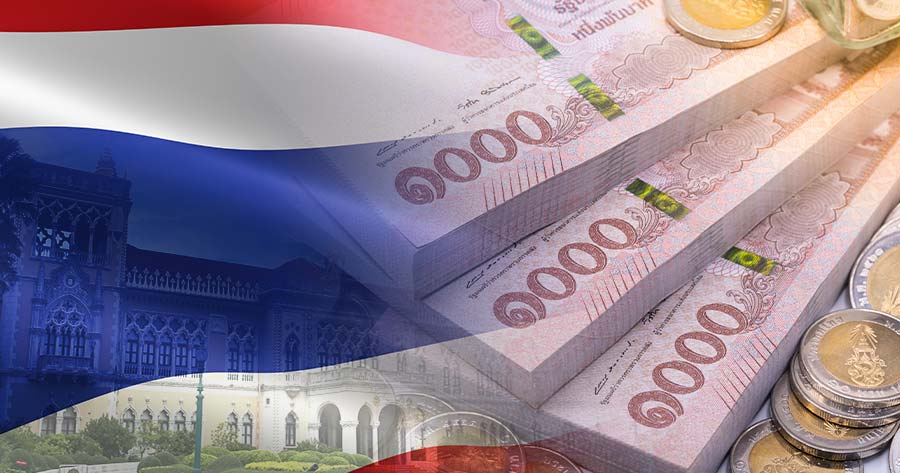Mr. Nantapong Chiralerspong, the Director General of the Trade Policy and Strategy Office (TPSO) of the Ministry of Commerce, revealed that the Consumer Price Index (CPI) in September 2025 was 100.11. Comparing to September 2024 (100.84), the headline inflation decreased by 0.72% (YoY). The main factor came from the decline in energy prices, including electricity and fuel driven by the government cost-of-living relief measures as well as the falling energy prices in the global market. Furthermore, the prices of fresh food items, especially chicken eggs, fresh vegetables, and fresh fruits, were still lower than last year. Other goods and services did not have a significant impact on the inflation.
Thailand’s inflation rate in August 2025 decreased by 0.79% (YoY) compared to other countries, positioning at the 9th out of 140 economies that reported figures, and the lowest rate in ASEAN among 9 countries that reported figures (Brunei, Singapore, Malaysia, the Philippines, Cambodia, Indonesia, Vietnam, and Lao PDR).
The headline inflation rate in September 2025, which decreased by 0.72% (YoY), was contributed by the prices of goods and services as follows:
Non – food and beverages category decreased by 0.99% (YoY), primarily due to the falling energy prices (gasohol, electricity, diesel, benzene fuel), personal care items (shampoo, body soap, skincare product, toilet paper, deodorant, face wash), airfare, clothes (men’s and women’s t-shirts, men’s and women’s shirts, men’s trousers), and cleaning products (ironing liquid, floor cleaner, laundry bleach, detergent). However, there were many important items with price rise such as housing rent, men’s and women’s hairdressing service, and pet food.
Food and non-alcoholic beverages category decreased by 0.24% (YoY), primarily driven by the falling prices of important items such as fresh vegetables (green onion, lime, Chinese cabbage, cilantro, fresh chili, Chinese broccoli, ginger, cabbage), fresh fruits (durian, guava, grapes, sugar banana, mango), chicken eggs, glutinous rice, and fresh chicken. Meanwhile, there were many items with price rise such as prepared food (ready-to-eat meal, rice and curry, noodle), fish and aquatic animals (short mackerel, snakehead fish), non-alcoholic beverages (instant coffee powder, coffee (hot/cold), chocolate drink), cooking ingredients (instant coconut milk, vegetable oil, coconut (dried/shredded), chili paste), and sugar products (dessert, ice-cream).
For the core inflation (the headline inflation excluding fresh food and energy), it increased by 0.65% (YoY), decelerating from 0.81% (YoY) in August 2025.
The Consumer Price Index in September 2025, when compared to August 2025, decreased by 0.03% (MoM), following the decreasing prices of non – food and beverages category by 0.13% (MoM), particularly the reduction of electricity charges by the government cost-of-living relief measures. Moreover, the prices of personal care items (body soap, shampoo, toilet paper, facial foam), cleaning products (detergent, floor cleaner, ironing liquid, bathroom cleaner), and clothes (women’s shirts, brassieres, men’s trousers) as a result of the promotional campaigns by businesses. Concurrently, there were items with price rise such as fuel (gasohol, benzene), personal care items (skincare products, toothpaste, mouthwash, toothbrush), and pet food. For food and non-alcoholic beverages category,
the Consumer Price Index increased by 0.10% (MoM), mainly due to the rising prices of fresh vegetables (cilantro, green onion, water spinach, lime, pumpkin, Chinese broccoli) and fresh fruits (tangerine, mango, dragon fruit, durian) as adverse weather conditions reduced the quantity of the harvested products in the market. Additionally, the prices of drinking water, oyster sauce, vegetable oil, and soy sauce also increased. Nonetheless, there were items with price reduction such as pork, delivered food, rice, glutinous rice, and fresh chicken.
The average consumer price index for the third quarter of 2025, compared to the same quarter of 2024, decreased by 0.74% (YoY), and compared to the previous quarter, it decreased by 0.19% (QoQ). As for the 9-month average (January – September) of 2025, it decreased by 0.01% (AoA) compared to the same period in 2024.
For the fourth quarter of 2025, the headline inflation is expected to be close to zero. There are four key factors potentially decelerating the inflation. First, the prices of Dubai crude oil in the global market are significantly lower than last year because OPEC+ countries have steadily ramped up the oil production. Second, the government is likely to continue implementing measures to ease the cost of living, especially the reduction of electricity Ft charge for September – December 2025 by 0.1572 Baht per unit, bringing the electricity rate down to 3.94 Baht per unit. Third, the prices of fresh vegetables and fresh fruits are greatly lower than the previous year due to the increased market supply. Plus, the base prices of fresh vegetables were also high in the past year. Fourth, large-scale businesses have organized marketing promotion campaigns to align with the current economic situation and the highly competitive market environment. On the other hand, the factors potentially accelerating the inflation are the prices of certain agricultural products and cooking ingredients that tend to be higher than last year such as pork, tamarind paste, instant coconut milk, coffee, salt, and vegetable oil.
Thus, the Ministry of Commerce has adjusted the prediction of the headline inflation for 2025, from between 0.0% and 1.0% (midpoint of 0.5%), to 0.0%. This adjustment reflects the facts that the inflation for the first three quarters of 2025 was lower than expected, alongside with the persistently weak economic growth, the lower prices of fresh fruits and fresh vegetables compared to last year, as well as the ongoing government cost-of-living relief measures. All these factors have contributed to a decline in the inflation.





